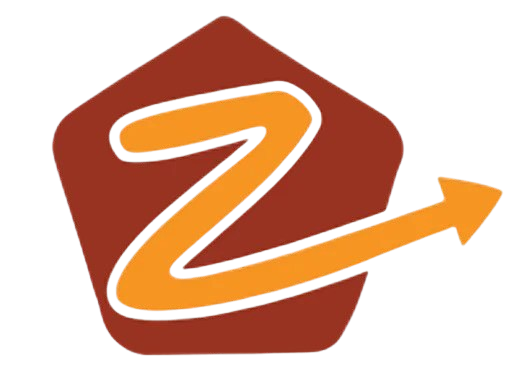Advertisement
June 11, 2025 | 7 min read
Listen to article 4 min
At this year’s ANA Masters of B2B Marketing, AI wasn’t just the buzzword – it was the brief.
Dan Callahan, group vice-president of national ad sales at Spectrum Reach
In a first-of-its-kind live experiment, two full campaigns were created in just 72 hours for two B2B brands, EY and Plante Moran. The ANA called it a “real-world stress test” for AI-powered marketing. Some are calling it the birth of lab-grown advertising.
“We asked ourselves, could we go from insight to air in the time it takes most marketers to schedule a kickoff call?” said Bill Zengel, EVP at the ANA. Spoiler alert: they could.
The Drum has already covered much of this AI-fueled marketing sprint, including the synthetic research from Evidenza and the speed-run creative from Waymark, but one of the most critical pieces of the puzzle came from Spectrum Reach, part of Charter Communications, which brought the campaigns to life across screens with addressable media plans built and optimized in real time.
Dan Callahan, group vice-president of national ad sales at Spectrum Reach, helped orchestrate the media side of the experiment. The results, he says, mark a turning point for B2B advertising on TV.
“We got both campaigns live by Monday morning,” Callahan told The Drum. “The first creative went out and by Tuesday night we had feedback and a revised version live on air by Wednesday morning. That turnaround would’ve been unthinkable just a few years ago.”
The media side of the operation relied on Spectrum Reach’s proprietary toolset: Architect for planning, Audience Finder and Audience Track for targeting and measurement and its Optimizer engine for delivery. All of it powered by deterministic, privacy-safe household data from over 30 million subscribers.
Crucially, it wasn’t just fast. It was specific. “EY was looking for tech professionals. Plante Moran needed finance and tax leads in Ohio,” Callahan explained. “We delivered on both briefs without any of the perceived waste of traditional TV.”
Advertisement
Unlike previous experiments, this wasn’t a case of AI helping out at the edges. Every element of these campaigns, from audience research to media planning to creative, was machine-led.
Evidenza used synthetic samples to impersonate real B2B buyers. “We generated CFOs, CIOs, procurement leads, all with the nuance of human decision-making,” said co-founder Peter Weinberg. “They don’t get survey fatigue – and they’re scarily accurate.”
Waymark turned the AI insights into creative in hours, not weeks. “We had working B2B ads from scratch in two days,” said CEO Alex Persky-Stern. “We’d generate five versions, get feedback from the clients and iterate again immediately.”
Spectrum Reach then deployed that creative across targeted households, updating it mid-campaign as insights rolled in.
“It was a practical demo of what’s now possible,” said Callahan. “This wasn’t a concept deck. These were live campaigns with real results.”
Callahan believes many CMOs still assume this kind of advanced addressable strategy is too slow, too expensive or too experimental.
“We’re here to challenge that perception,” he said. “We wanted to prove that it’s efficient, it’s fast. And frankly, it’s not that difficult any more. Especially if you’ve tried it five or six years ago and walked away. The tools are different now.”
He adds that while AI is doing more of the heavy lifting, there’s still a role for human judgment. “EY asked us in the room, ‘What if we don’t like what the machine suggests?’ And that’s a fair question. The algorithms can inform, but humans can override. That’s where the heart comes in.”
Advertisement
Five years ago, TV campaigns were planned in silos: linear here, streaming there. Now, Spectrum’s multi-screen planning tools let brands target households across platforms with unified visibility and control. And speed is no longer a barrier.
“We’re used to immediate delivery from digital platforms,” said Callahan. “Clients expect the same from TV now. Our tools let us meet that expectation – at scale.”
The results of this experiment will be shared back with ANA members in the months ahead. But even now, it’s clear that something has changed.
EY leaned on the safety of an existing brand campaign, refined through synthetic insight. Plante Moran gave the machines more freedom, letting them build something from scratch. Both got results. Both ran live within days.
For marketers still sitting on the sidelines, Brandlight CEO Imri Marcus had this warning during the conference: “If you’re a CMO and still waiting it out, you’re already behind.”
And for those ready to act? “The future is already here,” said Callahan. “We’re not testing any more – we’re airing.”
Catch up on the most important stories of the day, curated by our editorial team.
Stay up to date with a curated digest of the most important marketing stories and expert insights from our global team.
Learn how to pitch to our editors and get published on The Drum.
ANA
Driving growth for marketing professionals, brands and businesses, and the industry for the benefit of humanity.
Marketing can change the world.
© Carnyx Group Ltd 2025 | The Drum is a Registered Trademark and property of Carnyx Group Limited. All rights reserved.
